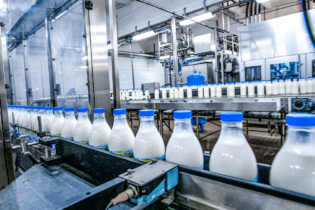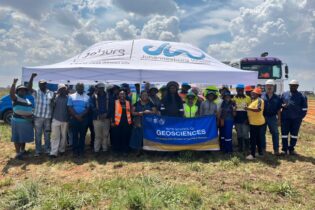Harvesting rainwater could be the sensible option for people who do not have the financial means to pay municipal water bills in urban areas, or those who simply want to conserve the finite resource. There has been a perception, albeit wrong, that people in urban areas such as Windhoek are not allowed to harvest rainwater during the rainy season.
However, the City of Windhoek says residents are allowed to harvest rainwater from their rooftops and use it for gardening or even for consumption purposes provided the storage container is clean. “If residents want to harvest rain water, they are free to do so at their own expense, but such water shall not be connected to any of the municipal supply systems and can only be used for private consumption,” the City of Windhoek said. Water Engineer, Serbi Brinkman, said the city does not want residents to connect the harvested water to their systems, because of the possibility of contamination. “You can do it for your own consumption provided that the container in which you store the water is hygienic, otherwise you can use it for gardening purposes,” explained Brinkman. According to Brinkman, a lot of Windhoek residents, especially among the middle class, harvest rainwater that they use for gardening and other purposes. “A lot of people are doing it from their roof gutters,” the engineer said. However, this is normally not the case among the poor, since buying a storage tank can be very costly. “But if they can afford it, they can do it,” Brinkman emphasised.The City has never run any campaign to encourage people to harvest rain water in view of the diminishing resource in an otherwise arid Namibia. A lot of households, even in Windhoek, go without water for months or even years, because they can simply not afford to pay for water. They simply get water from their neighbours or buy it from them, at minimal fees or in exchange for something else. Recently, the town of Rehoboth found itself without water, due to a massive debt that the town council owed the water utility, Namwater. The most common technique households are familiar with is collecting rainwater from rooftops using simple techniques such as jars and pots. More complex techniques include above or underground storage tanks, dams and collecting rainwater from the land surface. Since the rooftop is the main catchment area for rain water, the amount and quality of rainwater collected depends on the area and type of roofing material.
Pure rainwater can be collected from rooftops constructed with galvanized corrugated iron, aluminium or asbestos cement sheets, tiles and slates. Roofs with metallic paint or other coatings are not recommended since they may impart taste or even colour to the collected water. Roof catchments should also be cleaned regularly to remove dust, leaves and bird droppings so as to maintain the quality of the water and to minimise contamination.
According to a study done on “Rainwater Harvesting in Informal Settlements of Windhoek” in 2007, on average it rains 56 days of the year in Windhoek. Of those rainfall events, 64% produce 0.1-5.0mm of rain, meaning that a single household could harvest up to 144 litres in a single day. In the most extreme cases, rainfall of more than 85mm in a day could produce over 2 400 litres, but that has only occurred once in the last century. The highest significant rainfall intensity is in the 25.1-30mm range, with such an event occurring on average once a year. With this intensity, according to the study, a resident of Habitat II, could expect to harvest between 735 and 866 litres of water. On days of consecutive rainfall, even moderate intensities can produce over 1 000 litres in a few days.However, the need for a large amount of storage can be minimized if a household regularly uses harvested water. Therefore, it is believed that the amount of water harvested by a rain water catchment system can significantly offset municipal water usage, provided that the harvesting system has a good, hygienic storage facility.
In Namibia, it is believed that high poverty rates, an arid climate and other factors create inequity in the ability to afford a basic level of usable water. Many critics blame water un-affordability on the creation of the Namibia Water Corporation (Namwater). According to the rain water harvesting report, when all bulk water assets were transferred from the government to Namwater in April 1998, the cost of water for Namibians increased dramatically. According to Section 7(1)(a) of the Namibia Water Corporation Act, Namwater has the right to “determine and levy, in consultation with the Minister, tariffs on a full cost-recovery basis for water supplied”. Full-cost recovery involves passing all costs for processing and distribution on to the consumer without any government assistance. According to the report, before the creation of Namwater, water was almost completely subsidised, resulting in minimal water costs for consumers. The reason for the policy of full cost-recovery was adopted to make water processing and distribution financially sustainable and to encourage water conservation and responsible use. In contrast, the report states that the policy of full cost-recovery has led to a dramatic rise in the cost of water for most Namibians. “This transition has been especially difficult on impoverished citizens and their communities. Many informal settlements and smaller communities outside Windhoek are unable to pay the fees assessed by Namwater since these fees have increased rapidly over the past several years,” the report further states. Perhaps, people should start investing in storage facilities, in order to harvest rainwater from their rooftops. Source: newera.com







